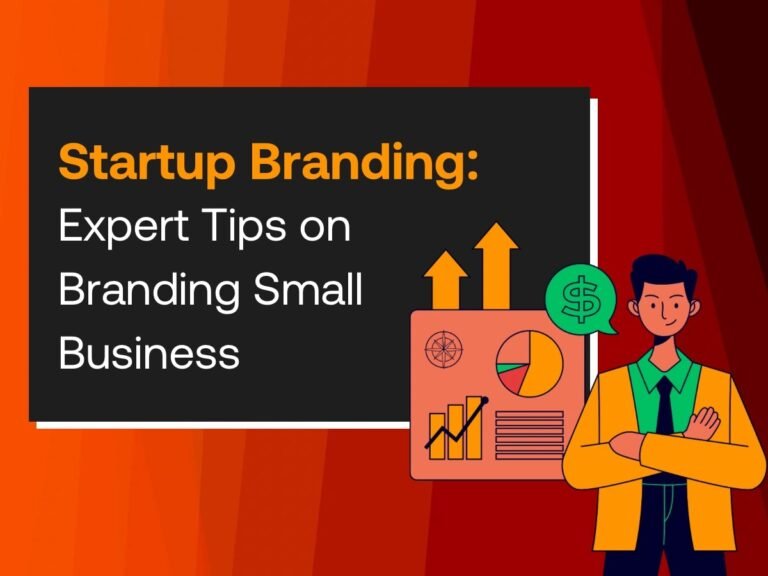
You need a website, no doubt, because what startup doesn’t? But do you know where to begin?. Let’s say you know how to build your startup website and you’ve picked from the trending website designs; what’s left is the template to use.
Hold on! The emergence of technology made everything easier and better; rather than build a website from scratch, you just use a website builder.
Why Use A Website Template?
Well, templates serve as a blueprint for website creation. With the right website template, you don’t need to structure your website from scratch—it’s done already. So, you just pick one, add personal touches here and there, and you’ve saved time and effort.
In this blog, we’ll go over how to pick the right website template for a startup.
It’s not enough to choose a random template; it just doesn’t work that way. Why? Your website serves as an online extension of your brand, so it must represent well. For this reason, you must use the template that suits your startup the best. Here’s how to choose a template.
This guide is useful for an online store.
How to Choose the Right Website Template for Your Startup
Choosing the right website template for a startup isn’t hard; just do the following:
1. Look Inward
Instinctively, you’ll pick the first template that catches your fancy, but take a step back. Remember, your website is a marketing tool, and marketing isn’t about you but the client. To make the right statement to your target audience, you need to pinpoint your message.
What kind of startup are you? What are your business goals? That way, you’ll know what template structure to look out for. For example
If you’re a freelancer, your base goal is to snag a job. As such, you need a website template that highlights your strengths and grants you visibility among other job seekers.
For an e-commerce business, conversion is your primary goal. So, you need a website template for a startup that amplifies your brand voice, draws the target audience, and eventually stirs them to make a decision.

2. Create a Website Template for Startup Checklist
Next, you must create a list of what you want your startup website to be. On the wishlist,
Your type of website comes first
There are several types of websites to choose from, and we’ve streamlined the options for you.
One-page vs Multipage Websites
Like the name implies, a one-page website contains only one HTML page. No extra pages—just one. To make up for the lack of additional pages, the one page is fully loaded with valuable content and optimised for fluidity to make the experience continuous for users. In fact, one-page websites record higher conversion rates than their multi-page counterparts, which is great. But it’s not a bed of roses either; this website type doesn’t support SEO that much, so you may not rank as high as you imagined.
Multipage websites, on the other hand, contain several pages. This type of website works well for enterprises of all kinds, particularly those with large amounts of content or products; it can’t fit on a page. Although it’s not easy to maintain (cost-wise), the scalability and massive SEO capability are some reasons why businesses go for it.
Responsive vs Adaptive Websites
These types of websites focus on making your website look good on mobile devices.
A responsive website design rearranges itself to suit the viewing device, while an adaptive website simply loads a predesigned layout for the specific device. While the former requires more website design expertise, an adaptive website is relatively easy.
Second, decide on a website layout.
A website layout is the arrangement of visual elements—texts, images, and logos—on a web page. You need to decide which format will best serve your visitors. Keep in mind smooth navigation and your goals. Some popular website layouts are
Z-pattern layout: This guides viewers’ gaze in a Z-shaped pattern across the page. Peek Insight is an example.
F-pattern: Common with designs with more text, viewers scan for what they need across the top, from left to right, then down the left.
Full-screen image layout: Allows you to display products or services with a strong visual impact.
Once you’ve picked your preferred layout, you’re ready for the next step.
3. Find a Website Template That Fits Your Brand
Once you’ve established your checklist, now it’s time for the fun part—finding the right website template for a startup. As said earlier, it’s not about the aesthetic only, but how well it aligns with your brand goals.
Since your website is your brand itself, you must pick a website template that relays exactly what you stand for. So, contemplate what your brand entails.
Are you an e-commerce store for office equipment (formal and stiff)? Or do you run a fashion-centred brand for the upper echelons of society (classy and Victorian)? Bright and fun?
It might take a while to find the website template that checks all the boxes, but it’s worth the wait—take all the time you need.
4. Consider Technical and SEO Capabilities
If you’re looking for a website template, you’re obviously not interested in building a website from scratch. Maybe you don’t know how to code—it’s okay, that’s why we loaded Quicklaunch with enough templates.
But, even if you aren’t a tech guru, it’s not an excuse to pick a template that’ll waste your time and add to your stress. So, pay special attention to the technical and SEO details of each template before you settle.
Some things to look out for are:
- Easy/automatic software updates
- Cookie consent and privacy policies
- Reliable plugins
- And customer support or tech assistance
Additionally, when choosing a website template for a startup, go for one that supports SEO. Why? Because SEO is important for website growth, and it plays an important part in lead conversion.
Here’s how it works:
When you launch your website, it’ll get buried under mountains of older websites, like new websites typically do. Then search engines crawl your website to check how valuable it is, and the more prepared you are for them, the higher your rank.
This leads to more visibility, increased traffic, and ultimately, a higher conversion rate.
So, check if the desired template supports search engine optimization. Here are some features of an SEO-friendly website template for a startup:
- A responsive design (explained in step 2)
- Structured Headers
- Optimized Visuals
- Intuitive Site Flow
- Navigable Design
5. Customize Your Template
Since you’ve found a suitable website template for your startup, it’s time to add some “me” touches. Hit the select button to start customising (there’s the view button to see how it’ll look at the end).
While the templates are grouped into categories, don’t hesitate to try out templates in categories outside yours. It’s just to streamline your choices. When you’re done, click on save, and your website’s live!.
Parting Words
Choosing the right website template for your startup isn’t just about looks—it’s about functionality, brand alignment, and long-term growth. Take the time to understand your business needs, explore your options, and customize a template that truly represents your brand. The right template sets the stage for a strong online presence—make it count. Not sure where to start? Book a free discovery call and let’s help you choose or build a website that fits your business perfectly.
Related Marketing Strategies

Startup Branding: Expert Tips on Branding Small Business

Social media strategy: Holiday-themed Giveaway Benefits



